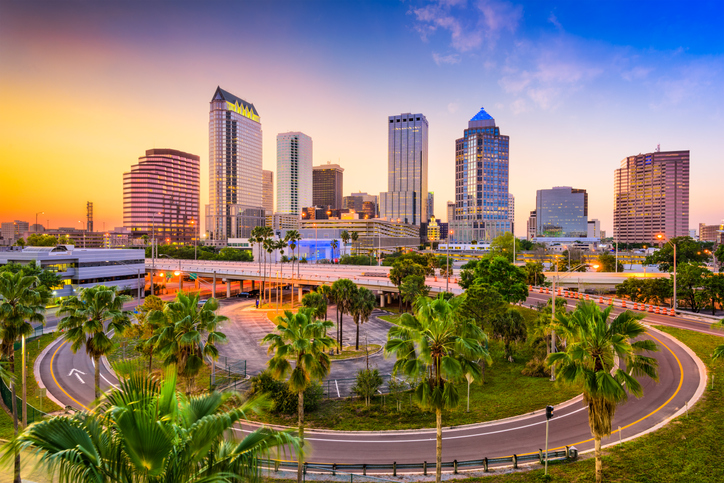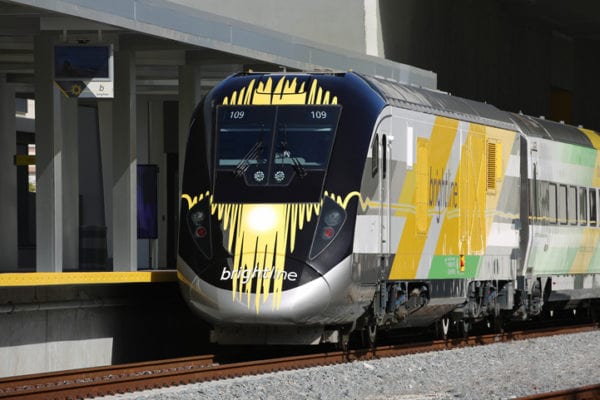According to the Tampa Bay Times, the Tampa region ranks last or second-to-last on all six measures that the federal government uses to rank public transit coverage and usage.
For people who live here, it’s no surprise to learn that Tampa’s transportation options, by all objective measures, stink.
Rush hour regularly features bumper to bumper traffic along all of the city’s major corridors. And for those who rely on public transit to get to work, it’s even worse: Bus commutes can be as long as four or five hours a day.
In November, voters gave a big “yes” to a one-cent tax increase to fund infrastructure updates. Here’s why that matters, and how it will impact your commute.
How It Got This Bad To Begin With
Put simply, the problem exists because Tampa Bay has steadfastly refused to address it.
While other major metropolitan cities around the country have invested in infrastructure over the past two decades, Tampa Bay has resolutely voted down every transportation spending bill that has been proposed. As recently as 2015, Governor Rick Scott turned down federal funding for transportation on the argument that it would require local spending as well.
And that’s just one example of the state and city’s failures to address transportation. The Tampa Bay Times article illuminates the problem with this list:
- Tampa Bay spends substantially less on transit each year than any other major metropolitan area. It is the only top 20 metro region to spend less than $213 million annually.
- Hillsborough and Pinellas leaders have repeatedly drawn up plans to close the spending gap, but almost every effort has been voted down.
- Similar-sized cities have treated their infrastructure problems as a crisis, and their systems improved. Tampa Bay failed to do the same, and our system got worse.
How The 1-Cent Tax Will Impact You
After decades of failed initiatives to fund transportation upgrades in the Hillsborough and Pinellas regions, a group called All for Transportation got behind a 1-cent tax increase on the ballot this November, and raised about $3 million to support it.
The measure passed, meaning that Hillsborough residents will pay 1% more in sales tax. Combined with another tax measure earmarked for education, the area will see an increase of 1.5%, for a total sales tax rate of 8.5%. This is one of the highest sales tax rates in the state.
Critics of the tax claim that it won’t fix the problem, but will create hardship for people on limited incomes.
For transportation improvement advocates, however, the tax signals a new era for Tampa Bay infrastructure.
Unlike most previous (failed) infrastructure proposals, the tax increase is not earmarked exclusively for public transportation, but will also be used to improve roads and safety features, and includes funding for citizen oversight to ensure the money is allocated as intended.
Area transportation experts say that over the next several years, residents can expect to see less traffic congestion, improved public transit access, and safer infrastructure.
The Future of Tampa Bay Transportation
The one cent tax measure calls for the tax to be in force for the next 30 years. It is expected to raise $276 million each year.
The funds will be used to widen roads, improve safety features, modernize bridges, and increase public transit options and routes.
Meanwhile, Tampa Bay is expected to continue to grow by about half a million people in the next twenty years. Infrastructure improvements funded by the tax will help prevent additional congestion and bring Tampa Bay onto a par with similar sized metropolitan areas.
For property owners and managers in the area, improved transportation options are likely to have a positive impact on property values and lease rates for commercial properties. It’s a good time to invest in real estate.
If you’ve got an urban development project in the works, don’t forget to do your environmental due diligence. Talk to us today to find out how we can help you mitigate your risks.




